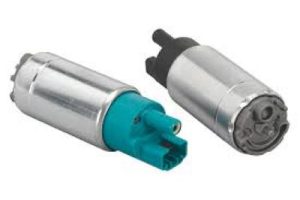Fuel pump voltage regulates the ability of the pump to keep pressure and flow rates stable, which in turn influences how much fuel is delivered. Fuel pumps are generally made to run between 12.5 and14.5 volts which is in order for it to create enough pressure that would normally fall around 40-70psi with most typical cars. If the voltage falls below this, the pump might not be able to flow enough fuel and volume can drop by as much as 25% The drop in pressure changes fuel atomization at the injectors and causes inadequate combustion, which may lead to rough idling or oh-so-frequent engine misses.
At well over 500 liters per hour fuel flow rate required in high performance vehicles, voltage stability is even more important. For instance, aftermarket pumps, such as ones from Kemso (Kemso 340LPH High Performance Fuel Pump), are capable of providing pressures above 90 psi during operation under high loads. Voltage drops with of these systems can have a devasting effect on overall performance as the pump falls behind the engine’s fuel demand when put under load or WOT.

Just like any other electrical part on your car, a wiring problem or corrosive connection to the fuel pump can create voltage drops which may decrease the pumps intended performance. This resistance increases with undersized wiring, leading to a 10% voltage loss in the circuit and is responsible for fuel delivery intermittencies. If the wiring and relays aren't rated for the current draw of that pump, you won't get your fuel flow. If the pump is running low & 12 V and being operated in that state for a substantial period of time, it's lifetime can be reduced by up to 30% as it struggles to push fuel through the system.
How Does Low Voltage Affect Fuel Delivery? If this is the case, the solution has to do with less than optimal pump efficiency resulting in decreased pressure and flow. Under high load conditions, the engine may get lean if the fuel input is irregular which can easily lead to detonation or even cause engine damage. But the pump still needs to run within a specific voltage range, which is why many vehicles that have higher fuel demands either use voltage boosters or dedicated electrical circuits.
For more information about the role of voltage on fuel pumps and possible high-performance upgrade options, get in touch with Fuel Pump using this link as Kemso will help to give you a trouble-free solution depending on the given voltage or required delivery rate.